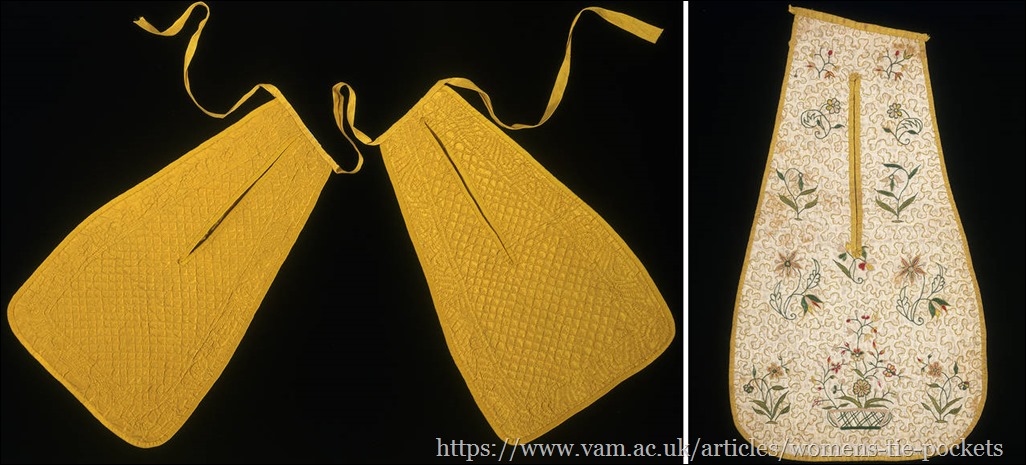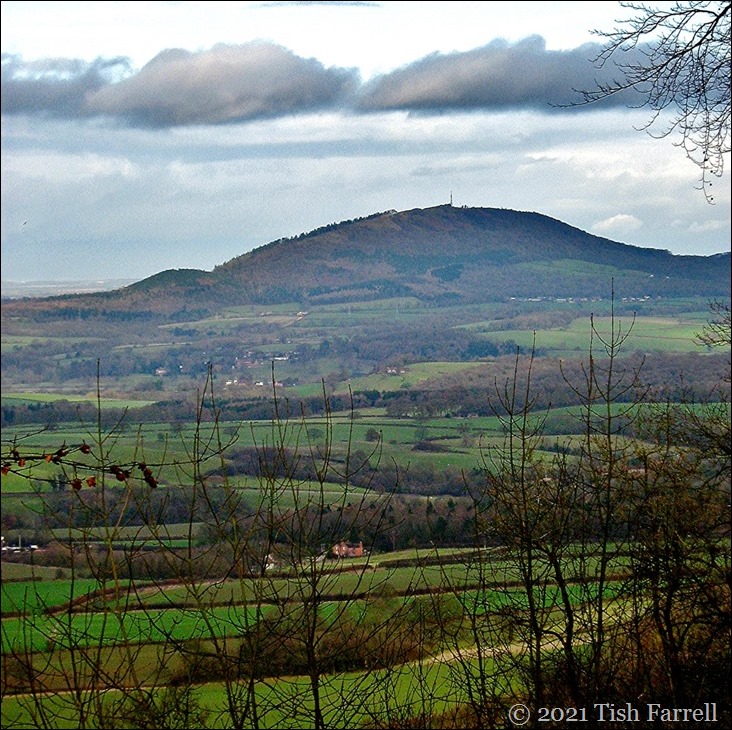
I have found more 17th century wills – a small clutch in fact – and all casting a light on the intermarrying Furnace and Bennett families, farmers and lead miners of Eyam (1607-1670).
This post concerns Elizabeth Furnace’s will of 1627, a simple list of clothing bequests to family members and friends. It is both deeply touching, and illuminating – an insight into the surprising prosperity of farming folk of the Eyam lead field during the second year of the reign of Charles I.
Elizabeth was the wife of Richard Furnace (11th great grandparents in my surmised tree, and variously spelled Furness, Furnis, Furnies). In his will of 1607 Richard was styled a husbandman which means he was a free tenant farmer and/or small landowner. On the farm he grew corn, oats, hay and barley, kept over a hundred sheep, a few cows, a breeding pig and had two mares. The household details are sketchy but the contents mentioned are typical of the time: board tables, bed frames, arks and chests, bedding and bolsters, hams curing in the roof space, twenty pewter dishes. He appears to have owned his house and the ground it stood on.
Five of Elizabeth and Richard’s children survived to adulthood. Two of them, Thomas the eldest son and his sister Anne married Bennett siblings, Margaret and William junior. If you have read my recent family history posts (see links under ‘related’) you will have already met the elder William Bennett, farmer of Gotherage, and also his spinster daughter Joan, sister of Margaret and William, she who apparently preferred taking over her father’s tenancy to marriage.
In 1627 when Elizabeth Furnace dictates her last wishes (a nuncupative will) to son Thomas, she has been widowed for twenty years. She is probably at least 70 years old, born then during the reign of Elizabeth I. The granddaughters to whom she leaves personal items are presumably ‘grown up’ enough to make immediate use of the gifts. Thomas’s teenage daughter, Elizabeth, for instance, does not feature, though her sisters and mother do.
Here then is my transcription. I’ve used modern spelling:
These are the words of a will nuncupative of Elizabeth Furnace the wife of Richard Furnace of Eyam in the county of Derby … received before her death.
Thomas, said she, I would have you give my clothes away
I would have you give to Anne Furnace the daughter of my son Richard Furnace two gowns and one petticoat
I would have you give to my daughter Joanne Furnace two petticoats, three waistcoats and three doublets and hat
And I would have you to let your own wife have two petticoats, one pair of new shoes and hose which I never had on
And I would have you to give to Amie Bennet of Gringlow my daughter’s daughter one hat and my napkin in my pocket
And I would have you give to Thomas Bocking’s wife my gloves in my pocket
And I would have you give your daughter Margaret the ruffs I have on
I would have you give your daughter Ann my working day gown and band
I would have you give Elizabeth Townsend my hose and shoes which I have on
I would have you give my waistcoat which I have on to Elizabeth Furnace my daughter
I would have you give to my daughter Anne my working day apron which I have on and my kerchief on my head
I would have you give to my daughter Joanne Furnace my ark and all my linen clothes in it
And Thomas I will give you fifty six shillings in my chest and forty shillings which Thomas Bocking oweth me…
…these were her last words
signed Thomas Furnace of Eyam in the County of Derby Yeoman
A few of these bequests need some explanation. Pockets for instance were separate ‘tie-on’ affairs that usually came in twos. Devised in the 17th century to rest on the hips, and fastened at the waist, they were often highly decorative. Women of rank carried in them all manner of valuable trinkets and snuff boxes, smelling bottles, even their diaries, whereas housewives might have their sewing kit, a comb or, in Elizabeth’s case, her gloves (also a valuable item) and napkin stowed there. They were pretty capacious items, forerunners of the oversized designer handbag. But then napkins were also large (around 36” by 45”, roughly a square metre) and doubtless needed to be kept close in a time when people still mostly ate using their fingers. It anyway seems a very personal item to bestow on granddaughter Amie Bennett, and probably conveys symbolic meaning too. I’ve seen other wills where a pledge to honour family obligations was sealed with the exchange of a napkin or handkerchief.

You can see more about pockets HERE.
The waistcoats and doublets would mostly likely have been fitted jackets with sleeves, and the petticoats full gathered skirts for outer not under wear. Wool is likely to be the fabric of choice for country living, with linen for under garments. Both men and women wore a long shift with a high gathered neck, and doubtless it is Elizabeth’s linen underwear that is kept in the ark (dome-topped chest) to be given to daughter Joanne. Women’s clothing also had a masculine look in the 17th century, hence the wearing of doublets and also large hats.

*
Gowns at the time were sleeveless, pleated across the shoulder back. With added ruffs they were garments that conveyed great presence. Obviously there is no knowing how Elizabeth’s gowns would have looked. There seems to be little surviving evidence of 17th century clothes for the middling classes. But it’s likely they were fairly plain and in sober shades suitable for a widow. In fact Anne who is to receive them is the daughter of Elizabeth’s second son, Richard Furnace. He was/or would become a non-conformist who gave financial support (both in life and after his death) for the relief of persecuted Quakers. (The house in the header image is his house in Eyam, built in 1615.)

Elizabeth’s gowns would have been nowhere near as grand as the one in the photo. Nonetheless, it is obvious that clothing generally was both highly valued and valuable to be bequeathed in this manner. Today most of us would feel uncomfortable to receive the used and personal items from a dead grandmother. I’m also surprised that Elizabeth was so very well clothed for the widow of a husbandman, and in an era when ordinary working folk struggled to own two shirts or shifts (one on and one in the wash) and when a single woollen jacket would be expected to last for many years. But then it is also possible/likely that her parting ‘wardrobe’ spanned decades of ownership of clothing that had been well made and cared for. Fashions during Elizabeth’s lifetime had not changed so very much. On the other hand she was not a dependent. Richard had left the farm jointly to her and to Thomas. She could buy a new waistcoat or hose if she so decided. Besides, it seems the Furnace family is prospering since Thomas now styles himself ‘yeoman’.
I’m wondering if you have formed an image of this woman as she bequeaths all her clothing down to the pieces she is wearing. She is clearly not bedridden, for she has on her hose and shoes; also her working day apron, doubtless over a full woollen skirt (petticoat), complete with well-filled pockets. Then there’s the sleeved waistcoat like the one in the pattern diagram above, probably also in plain wool. There are ruffs at her neck, a kerchief over her hair. She has all her wits about her too as she enumerates and disposes. Perhaps she is in her bedchamber, the ark and chest lids up, Thomas sitting at a small table near the window as he takes down her instructions. Elsewhere in the house, Margaret his wife is overseeing the preparation of the day’s meal, potage (a stew or sorts). Elizabeth her daughter checks on the batter that is fermenting for the next batch of oatcakes, a Derbyshire staple. Outside, life on the farm continues, a soundscape of bleating sheep and the rattle of cartwheels on unmade roads, the chatter of passing neighbours.
The young Elizabeth, busy with household tasks, will marry Francis Frith of Eyam in 1636. They will have nine children. The second son William will be the favourite of Elizabeth’s aunt, Joan Bennett of Gotherage, her mother’s sister. In spring 1665, when in his early twenties, William will be entrusted to be Joan’s executor and inherit her tenant farm and all its possessions. Joan says his mother Elizabeth is to have all her wool and linen clothes. She says that William is to deliver them to her.
Related:
When 11th great grandfather was about to die…
“My mind and will is…” Joan Bennett 1665










































